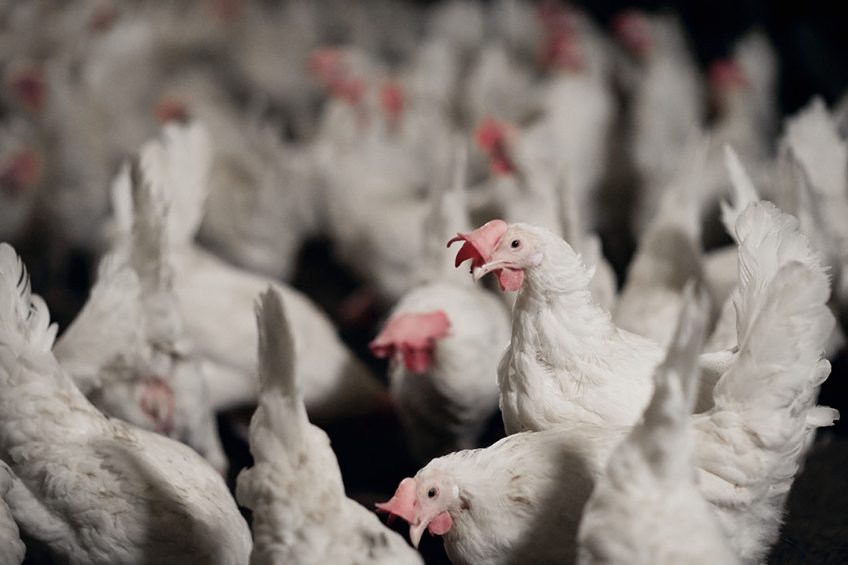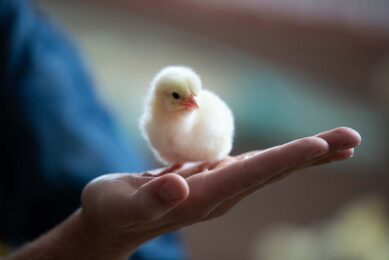New take on tackling litter management

Maintaining good litter quality is essential to poultry health and welfare but also a constant challenge.
A new take on litter management using the latest probiotic technology in feed can help to support favourable in-house conditions.
Litter management is a vital part of the day-to-day running of poultry farms. Without effective control measures in place, litter quality can quickly deteriorate and create a poor environment where the birds struggle to thrive. From foot, leg, and respiratory problems, to increased risk of disease and mortality, the consequences of substandard litter conditions are far reaching and costly. High levels of ammonia resulting from poor quality litter is of particular concern. Firstly, because it is an indication of greater proliferation of pathogenic bacterial groups which can impair bird health and performance. But also because elevated ammonia emissions contribute to poor air quality, increasing environmental concerns and reducing the fertilizer value of litter. With studies suggesting that producers can lose up to US$ 1,000 per flock due to issues related to poor litter quality, tackling this problem is a priority. To do so effectively, however, it is important to understand the key factors influencing litter conditions.
Governing factors
In a poor litter scenario, the litter is wet with elevated levels of pH and microbial growth (see Illustration). All 3 aspects are interrelated and need to be controlled to create the optimum environment for poultry production. This is because excess moisture in litter increases water activity (aW) to a level that is favourable for the proliferation of common pathogens, such as Salmonella and E.coli, as well as ammonia-producing bacteria. Equally critical is the raised alkaline pH value of the litter which, at between 7.0 to 9.5 due to the accumulation of ammonia and faecal material, is ideal for micro-organism growth and ammonia volatilization.

Undigested nutrients in the excreta is another important factor to consider in this context. Left unchecked, these can cause litter to become less friable and increase the moisture content by trapping water, further encouraging the growth of microbial populations. Given the scale and complexity of poultry production facilities, any problems related to poor litter quality will be time consuming to resolve and highly likely to lead to economic losses. Determining a good litter management strategy is the key to improvement.
Multi-layer protection
The goal for producers is to control and improve the 3 parameters that are known to affect overall litter quality. Improvements can be made by reducing litter moisture to limit the growth of pathogenic bacteria, by reducing the pH to around 7 to reduce ammonia volatility, and by controlling the growth of target micro-organisms and by doing so, protect bird health and performance.
The ideal litter treatment needs to fit easily into existing operational practices and provide combined protection against all 3 risk factors. One approach that offers significant potential in this regard is the use of biological feed additives. Added directly to the feed, this method offers advantages in terms of efficiency for busy production managers and provides long-lasting protection due to the ‘virtuous circle’ it creates, where beneficial bacteria are constantly excreted by the bird into the litter and then eaten again. This mode of action has a distinct advantage compared to alternative products, such as topical chemical amendments, which are known to become ineffective over a relatively short period of time.
 How to ensure litter quality?
How to ensure litter quality?
Depending on region and climate conditions, the floor in the broiler house can differ, as can the availability of litter material.
Of course, any nutritional intervention needs to be supported by robust and credible data to demonstrate its ability to deliver consistent results on every level. This is particularly important given that many poultry producers are already investing in promoting good gut health and reducing their antibiotic footprint, and so cannot afford for these efforts to be undermined by a poor-quality in-house environment. The good news for producers is that there is a viable solution. Enviva Provalen Plus is a multi-strain biological feed additive that uses the latest probiotic (DFM) technology to keep bad bacteria at bay and – unlike many of its competitors – is supported by robust data demonstrating its positive impact on litter quality in countless commercial settings.
High performing probiotic
The new probiotic is a 5-strain feed additive, comprising 2 distinct groups of bacteria that have been carefully selected for their working properties. 3 strains of enzyme-producing bacteria digest poultry manure and so promote the natural drying of litter, 2 strains of bioactive peptide-producing bacteria were added to inhibit specific bacterial populations, resulting in reduced bacterial challenge and lower levels of ammonia. With this high-performance formulation, this probiotic effectively creates a series of barriers to inhibit the growth of pathogenic bacteria.
By degrading undigested protein and starch in the litter, it reduces the substrate available for microbes which, in turn, reduces the breakdown of uric acid and corresponding ammonia volatilization.
 ‘Intrigued by the impossible’
‘Intrigued by the impossible’
“When the common consensus is that something can’t be done, that is when I get intrigued as a researcher,” says Dr Leon Marchal, innovation director at DuPont Animal Nutrition.
At the same time, its ability to reduce the water-holding capacity of the litter improves friability and means that unwanted bacterial populations are less likely to proliferate. In other words, Enviva Provalen Plus reduces undigested nutrients in the litter and promotes beneficial bacteria to improve the quality of the litter. A dual mode of action that boosts bird health, welfare, and performance, while also reducing environmental impact.
Backed by evidence
Backed by robust research, the feed additive is proven to consistently deliver positive results in numerous commercial poultry settings. A combined analysis of 12 commercial broiler houses, for example, demonstrated tangible improvements in bird growth and a marked reduction in feed costs because of improved litter quality. In this study, a nutritionally adequate control diet was fed to 4 commercial houses, while the control diet supplemented with the feed additive at 500g/tonne was given to 8 commercial houses. The trial ran for a total of 180 days, with diets fed to 3 consecutive flocks for a period of 60 days. Diets were based on corn/soybean meal and fed as crumble in the starter phase, and pellets in the grower/finisher phase. Flocks 1 and 2 were housed on built up litter, after which the houses were cleaned and filled with new pine shavings for flock 3.
 Innovation and sustainability: The best of both worlds
Innovation and sustainability: The best of both worlds
Animal producers face a dual challenge: cope with welfare constraints and increasingly demanding consumer needs while making sure they remain competitive and financially efficient.
Performance parameters measured at the end of each flock found that, on average, those birds receiving feed supplemented with Enviva Provalen Plus showed a 2.2% improvement in feed conversion ratio (FCR) and a 2.1% reduction in feed costs. Equally compelling is the effect of the probiotic supplementation on bird health and welfare. A separate trial involving 6 commercial houses followed the same methodology outlined above but aimed to assess the impact of improved litter quality on footpad dermatitis and lesions. In both cases, clear improvements were reported; the incidence of footpad dermatitis fell by 35%, while the number of birds without footpad lesions rose to 42.5% – an increase of 17.5% compared to the control (see Figure 1).
Figure 1 – Enviva® Provalen Plus reduces footpad dermatitis and lesions of broilers in commercial settings, as a result of improved litter quality.

Authors: Terry Parrott and Dr Jordon Gruber, DuPont
Join 31,000+ subscribers
Subscribe to our newsletter to stay updated about all the need-to-know content in the poultry sector, three times a week. Beheer
Beheer








 WP Admin
WP Admin  Bewerk bericht
Bewerk bericht